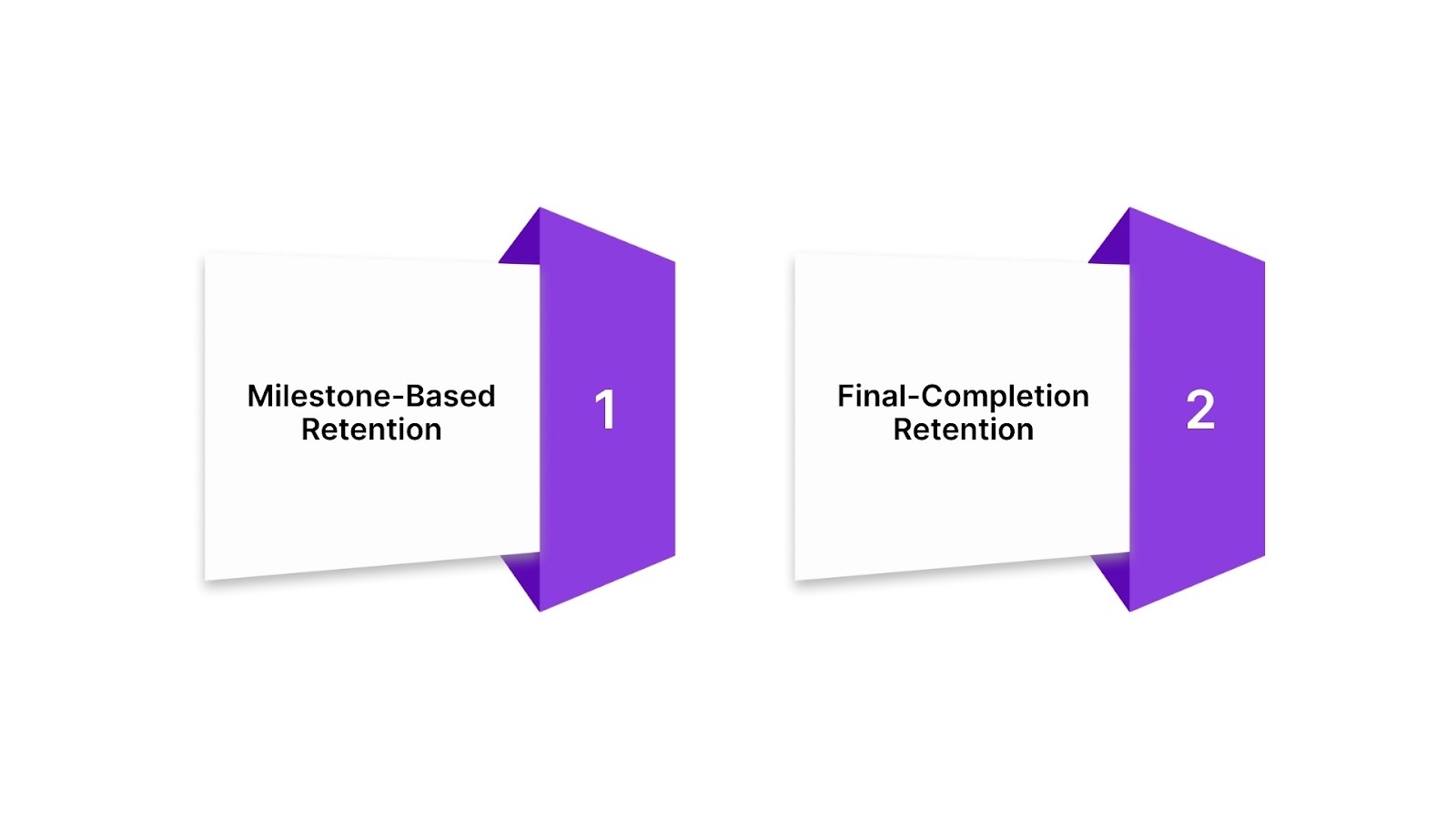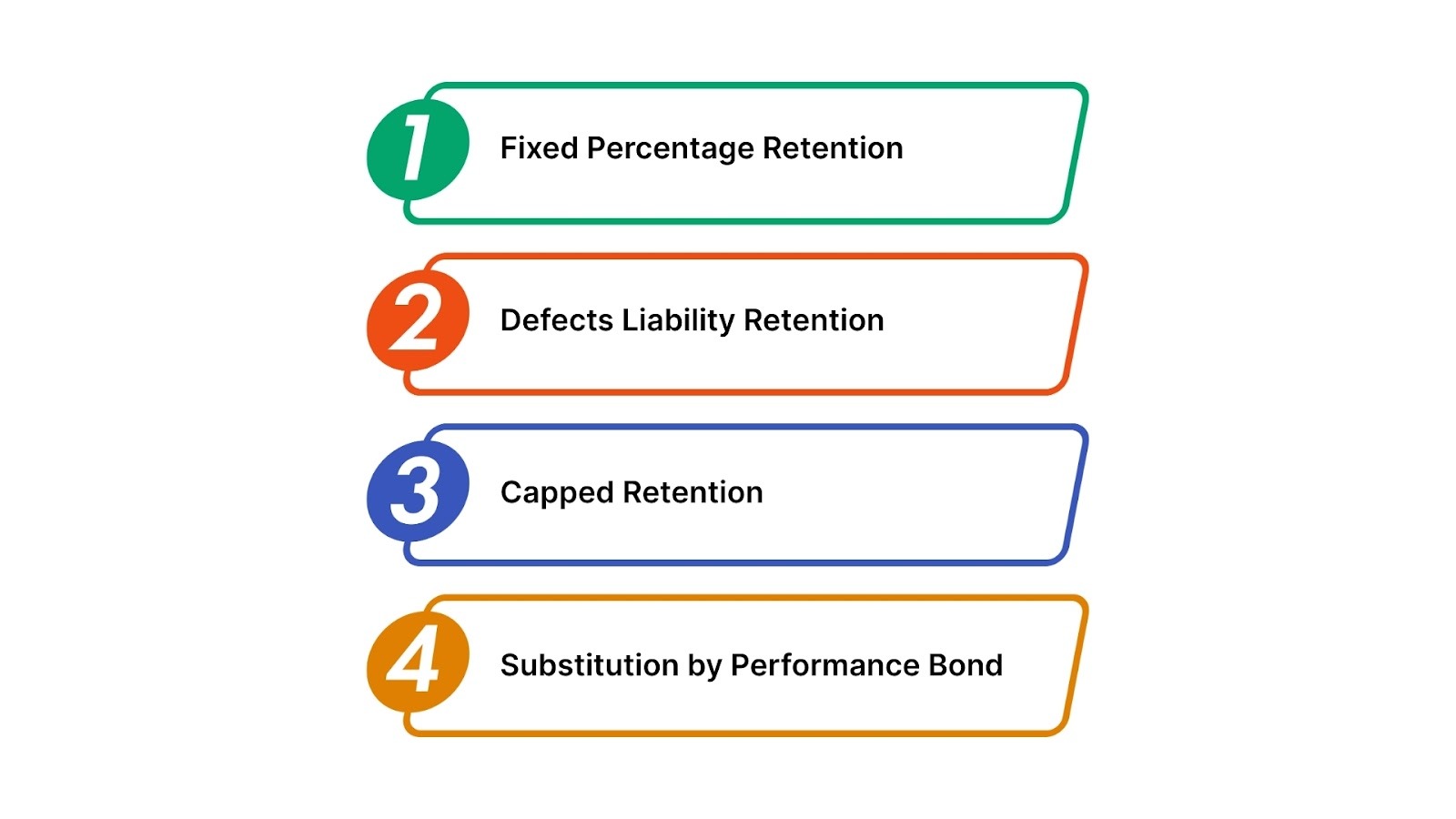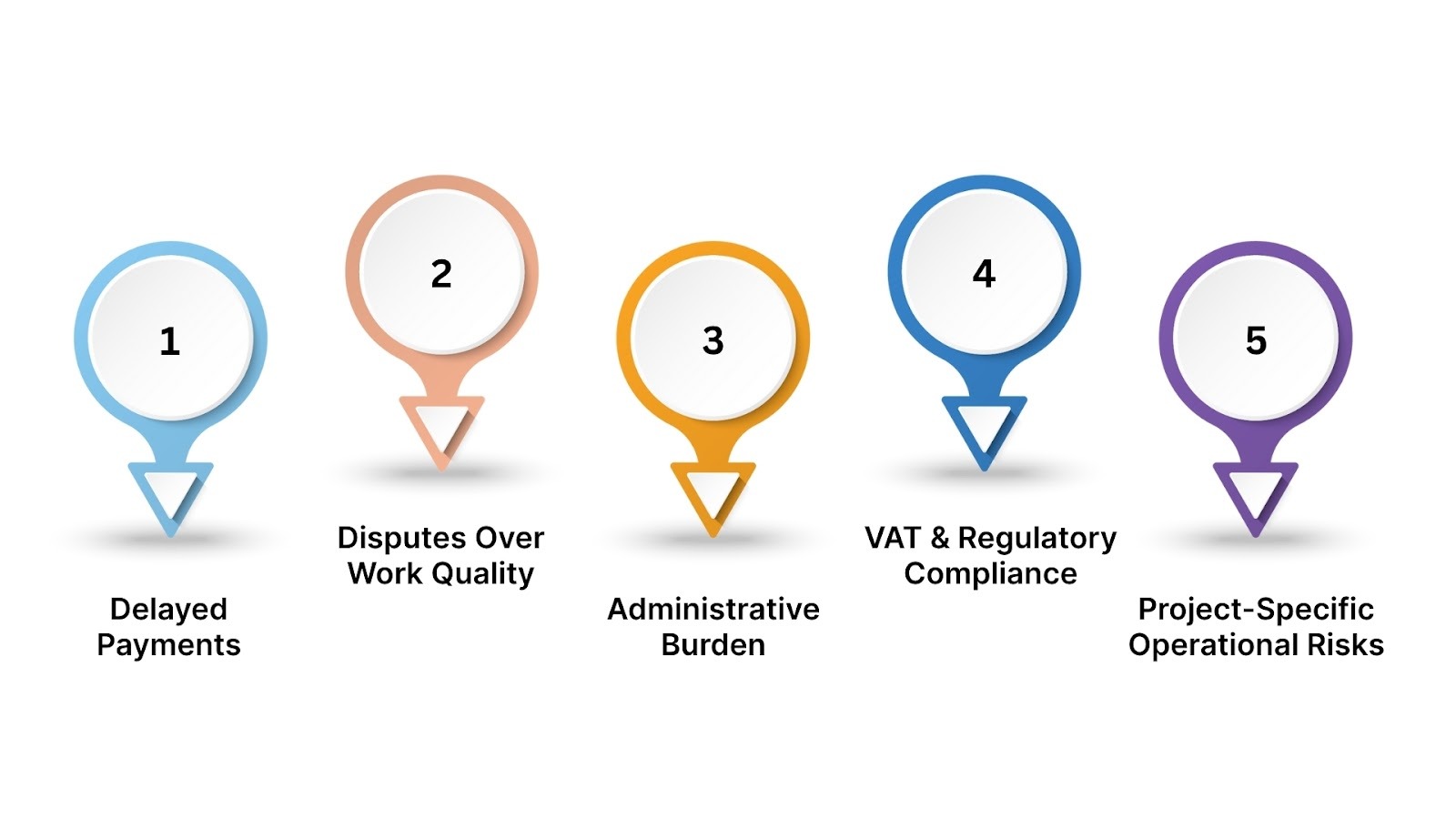
In construction, receiving full payment isn’t always immediate. Usually, 5–10% of every payment is held back as retention to guarantee quality and project completion. That seemingly small percentage can, however, create major headaches when it comes to invoicing, VAT, and compliance.
To stay on track, you need to understand the retention invoice meaning, how VAT applies, and how to record it correctly under ZATCA’s e-invoicing rules. A single error can lead to delayed payments, invoice rejections, and cash-flow issues that disrupt project timelines.
With Saudi Arabia’s Vision 2030 accelerating infrastructure development, managing retention efficiently has become vital, especially for small and mid-sized construction firms.
This blog walks you through retention invoices, from meaning and accounting treatment to VAT compliance, operational risks, and ERP-driven solutions.
Retention is a common payment practice where a portion of a contractor’s payment is withheld until the project reaches certain milestones or is fully completed. This amount typically ranges from 5% to 10% and acts as a safeguard for clients to ensure work quality.
A retention invoice clearly shows three key figures: the total certified amount, the retention withheld, and the net payable. For example, if your project is valued at SAR 1,000,000 with 5% retention:
These numbers might look straightforward, but how you record and track them matters. They directly affect cash flow, accounting entries, and compliance, especially under Saudi Arabia’s VAT (Value Added Tax) and e-invoicing rules.

Understanding these retention types helps you plan budgets, manage cash flow, and forecast project profitability more accurately. Now, let’s look at why retention exists and how it shapes both contractor and client behavior in real-world projects.
Retention exists to ensure accountability and protect both parties in a construction project. It gives clients confidence that contractors will complete the work to the required standards while providing a financial cushion if issues arise later.
There are two main purposes behind it:
i) Ensuring Project Completion and Quality: By withholding a small portion of payment, clients motivate contractors to maintain quality throughout the project and address any defects after completion.
ii) Providing Financial Security: The retained amount serves as a safety net for clients, covering potential costs if work remains incomplete or fails to meet expectations.
While this benefits clients, it can create cash-flow challenges for contractors, especially smaller firms managing multiple ongoing projects. Understanding how retention works helps you plan your finances better and prevent liquidity gaps.
For instance, in a SAR 1,000,000 commercial project with 10% retention:
Typically, in Saudi Arabia, the defect liability period lasts 6–12 months, after which the retained amount is released once the project passes inspection and the client confirms completion. Let’s understand how it benefits both contractors and clients.
Also read: How to Create Effective Construction Progress Reports
Retention is often seen as a financial roadblock, but in reality, it’s a mechanism that builds trust, enforces accountability, and ensures quality delivery for both contractors and clients.
When implemented well, retention becomes more than just a deferred payment; it’s a structured tool for quality assurance and mutual accountability. It helps clients secure value for money while enabling contractors to build credibility, improve project discipline, and ensure repeat business.
Now, let’s see how contracts define the rules for withholding and releasing these funds, which is essential for accurate invoicing and cash-flow management.
Retention clauses vary across construction contracts, and understanding them is crucial to avoid disputes, ensure timely payments, and plan your cash flow effectively. These clauses define exactly how much is withheld, under what conditions, and when the retained amount is released.
Common types include:

When creating invoices, you need to mirror the contract clause precisely. For example:
Careful alignment with contract terms ensures accurate invoicing, prevents disputes, and enables precise cash-flow planning. In Saudi Arabia, VAT must be applied to the full certified amount, not just the net payable. This makes proper invoicing critical for compliance and smooth project financial management.
That said, let’s understand how to account for retention and its impact on your cash flow, so you can plan operations without surprises.

In Saudi Arabia, VAT applies to the full certified invoice amount, even if part of it is retained. For instance, if a project’s certified value is SAR 100,000 and 5% (SAR 5,000) is retained, VAT must be calculated on the full SAR 100,000, not just the SAR 95,000 paid immediately.
For e-invoicing under Fatoorah, the retention must be listed as a separate line. Incorrect coding or omission can lead to invoice rejection, especially when dealing with large clients in sectors like oil & gas or government projects.
Another important point: VAT is due at the earliest of invoice issuance or payment, even if the retained portion is released later. Retention cannot be treated as a deferral for VAT purposes. Following these rules ensures compliance and prevents rejected invoices. Let’s explore how retention clauses in contracts dictate withholding amounts, release conditions, and invoice treatment.

Retention management isn’t just about issuing invoices; it’s about tracking both what’s earned immediately and what’s withheld. Clear accounting is critical for cash-flow planning, especially for CFOs or finance leads.
Consider this example:
Invoice Entries:
Payment Received (Net):
Retention Released Later:
Retention can tie up significant working capital, and with multiple projects, poor management can strain cash flow. Forecasting release dates, keeping proper documentation, proactive follow-ups, and clear client communication are essential. While retention has benefits, contractors must be aware of the risks and operational challenges in Saudi construction projects.

Managing retention invoices in Saudi construction projects can be challenging. Contractors face operational risks, administrative burdens, and cash-flow pressures that, if not managed carefully, may lead to delayed payments and disputes.
In many Saudi projects, retention ranges between 5% to 0% of the total invoice. While this may seem small, it can tie up significant working capital, especially in large projects or when payments are delayed.
Common challenges include:
By understanding these risks and implementing structured processes and technology, retention can be turned into a predictable and manageable part of project finances. Contractors who adopt this approach benefit from smoother operations, stronger client trust, and improved cash-flow control.
To stay on top of retention and avoid cash-flow or compliance issues, CFOs need a clear, actionable process. The checklist below simplifies retention management and ensures reliability.

Retention management can be complex, but a structured approach reduces risk and ensures smoother cash flow. Before issuing invoices, CFOs should:
HAL ERP streamlines retention tracking, VAT compliance, and invoicing, making the process faster and more reliable. Let’s explore more on that.

Managing retention manually can be time-consuming and error-prone, especially for small or mid-sized construction businesses handling multiple projects. HAL ERP simplifies retention tracking, invoicing, and compliance, giving you better control over cash flow while reducing administrative burden.
What HAL ERP Does for You:
See how HAL ERP can solve cash-flow gaps for Saudi construction firms. Book your free consultation.
To see HAL ERP in action, consider Al Faneyah, a Saudi construction firm.
Before HAL ERP, Al Faneyah, a leading Saudi construction and electromechanical contracting group, struggled with slow, Excel-based workflows. Challenges included:
With HAL ERP, Al Faneyah now operates on real-time data instead of spreadsheets, turning retention into a predictable and manageable process. Learn more here.
Getting the retention invoice meaning right is no minor detail for your finance role in Saudi construction. You’re not just issuing an invoice, but managing withheld funds, following VAT rules, aligning with e-invoicing requirements and protecting your company’s cash flow. When you do it properly, you reduce invoice rejections, minimise disputes and gain confidence in your working-capital planning.
HAL ERP simplifies this entire process. From retention-aware invoicing to VAT compliance and cash-flow forecasting, it handles the details so you can focus on preserving cash, ensuring accurate reporting, and driving predictable growth.
Take control of your retention strategy and streamline invoicing. Book a demo for KSA projects!
1. What does the retention invoice mean in practice?
A retention invoice shows the certified payment, the percentage or amount withheld for retention, the taxable base and net payable, giving full visibility of the hold-back.
2. Does VAT apply to retention in Saudi Arabia?
Yes. VAT is calculated on the full certified amount, regardless of whether the retained portion is paid immediately or later.
3. How should I show retention on a ZATCA e-invoice?
List the gross certified value, include a separate line for retention withheld (negative or “withheld”), calculate VAT on the gross, and then show the net payable. Ensure your system supports the retention line and properly generates the XML if required.
4. Can retention be replaced by a bond?
Yes. Some contracts allow a performance bond instead of cash retention. However, you still need to track the accounting and VAT as if retention were withheld, unless the bond fully substitutes the withholding.
5. What happens if the client withholds retention beyond the contract?
This creates a cash-flow risk. You may need to escalate through contractual or legal channels, while keeping the retained amount recorded as a receivable, not revenue.
6. How can HAL ERP help with retention management?
HAL ERP automates retention invoice lines, tracks VAT on the full certified value, forecasts release dates, and ensures ZATCA-compliant e-invoices. It transforms retention from a manual challenge into a predictable, manageable process.